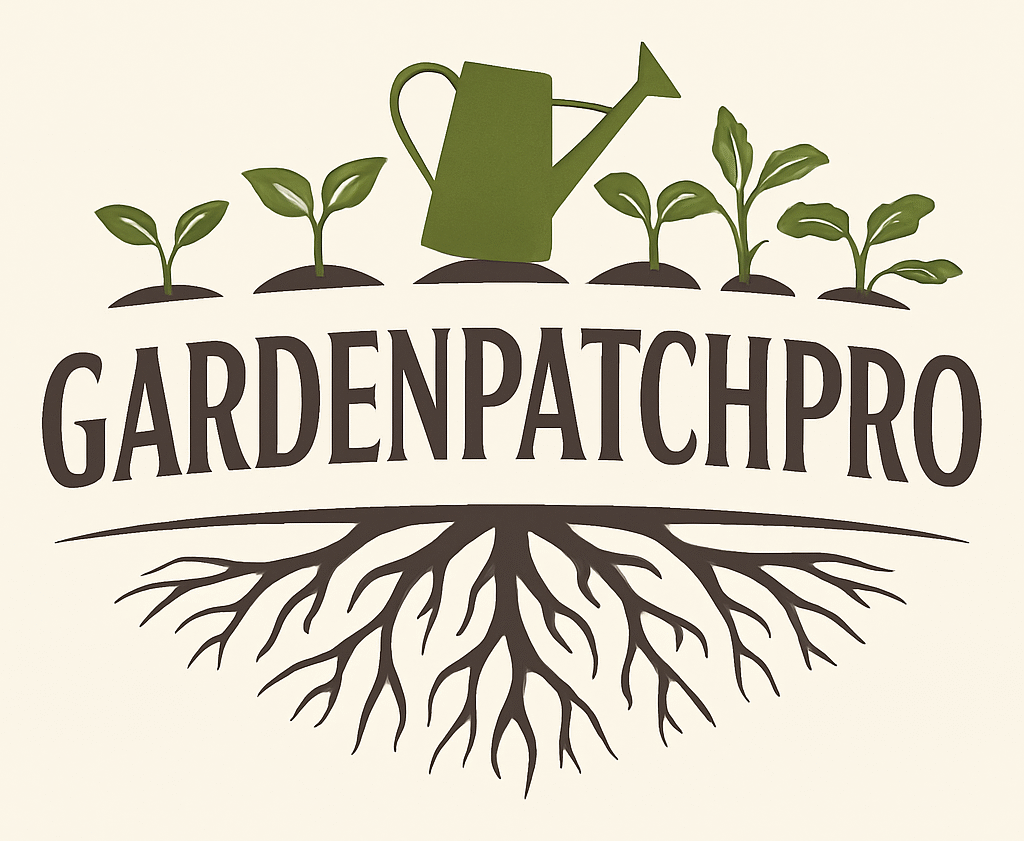7 Vertical Herbs Garden Ideas for Small Spaces and Maximum Yield
Many people want to grow fresh herbs but struggle with limited space. Vertical herb gardens offer a smart way to maximize small areas while keeping herbs within easy reach. These gardens use walls or vertical structures to grow multiple herbs in a compact setup.
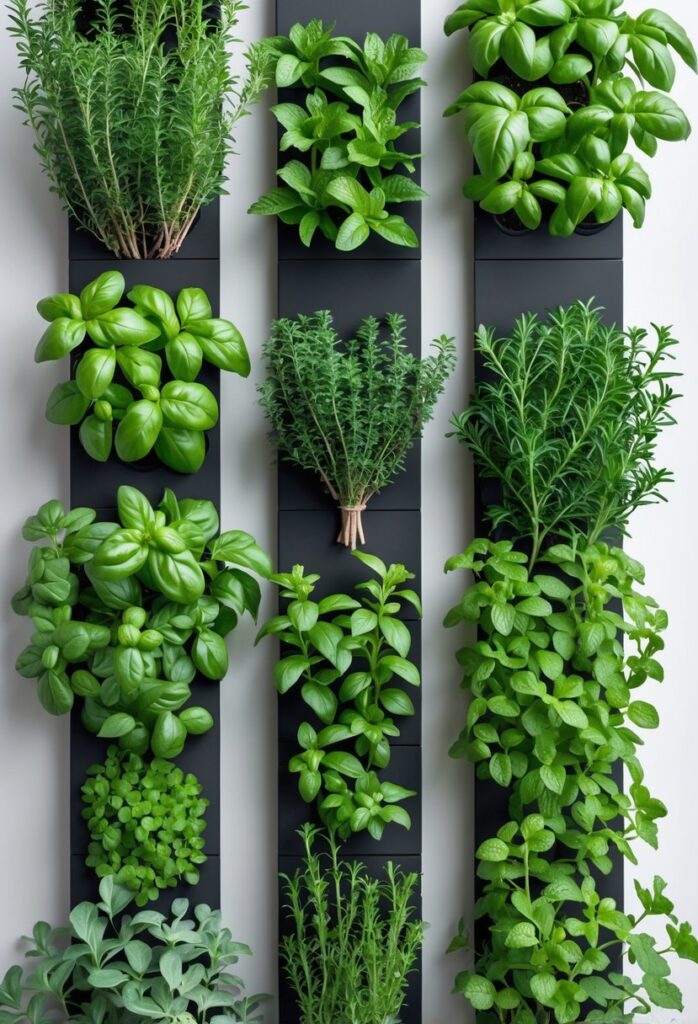
A vertical herb garden lets gardeners grow fresh herbs efficiently without needing a large yard or garden space. This method works well for balconies, patios, or even indoors, making it accessible for different living situations. It also adds greenery and life to small or unused spaces.
1) Basil: Ideal for vertical gardens due to its compact growth and culinary versatility

Basil grows well in small spaces, making it perfect for vertical gardens. Its compact size allows it to fit neatly in containers or wall-mounted planters.
This herb is popular in cooking because of its fresh, sweet flavor. People use it in sauces, salads, and teas.
Basil is also easy to care for. It needs plenty of sunlight and regular watering to stay healthy.
For more details on growing basil in vertical gardens, see best practices from vertical herb garden guides.
2) Thyme: Thrives in pocket planters and adds robust flavor to dishes
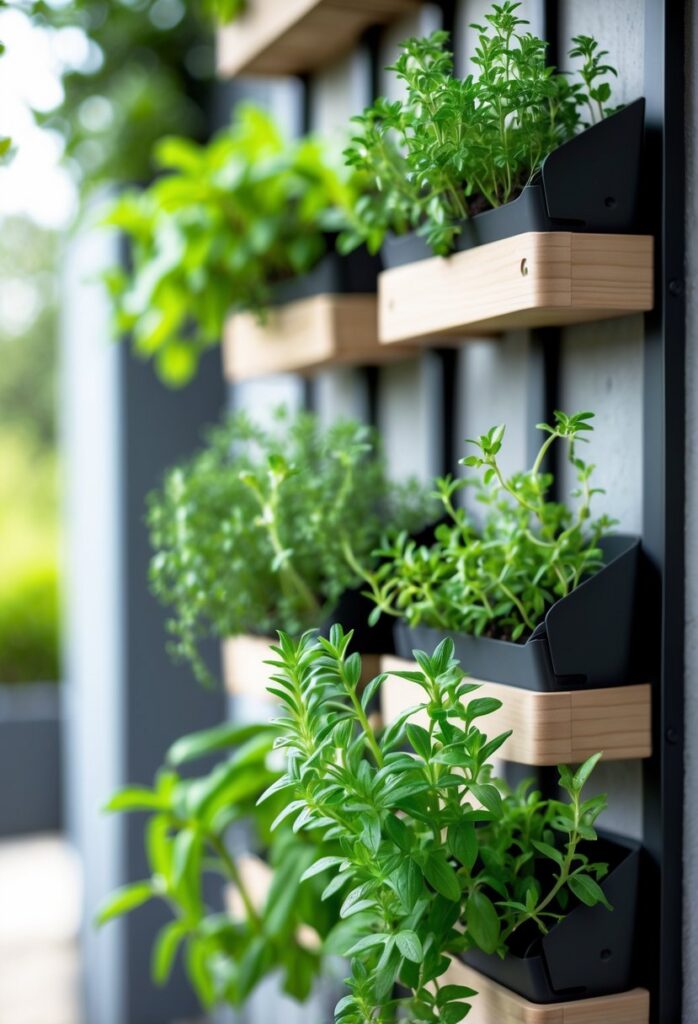
Thyme grows well in small, vertical pocket planters. It needs plenty of sunlight, making these planters ideal for balconies or sunny walls. Thyme is a hardy herb that does not require much water, making it low-maintenance.
Its strong, earthy flavor enhances many recipes like soups, stews, and roasts. Growing thyme vertically saves space while keeping fresh herbs close at hand. This method suits people with limited garden space who want fresh thyme year-round.
For more details on growing thyme in containers, see how thyme grows in pots and small spaces.
3) Mint: Adaptable and fast-growing, perfect for vertical setups

Mint grows quickly and adapts well to vertical gardens. It thrives in small containers or pocket planters, making it easy to fit in tight spaces.
Because mint spreads fast, growing it vertically helps control its growth. This stops it from taking over other plants.
Mint also prefers a sunny spot with good airflow. Watering from the top of vertical towers helps keep it healthy and moist. Growing mint vertically saves space and keeps the garden organized.
For more details on growing mint vertically, see this guide on how to grow mint vertically.
4) Chives: Require minimal space and provide fresh onion flavor
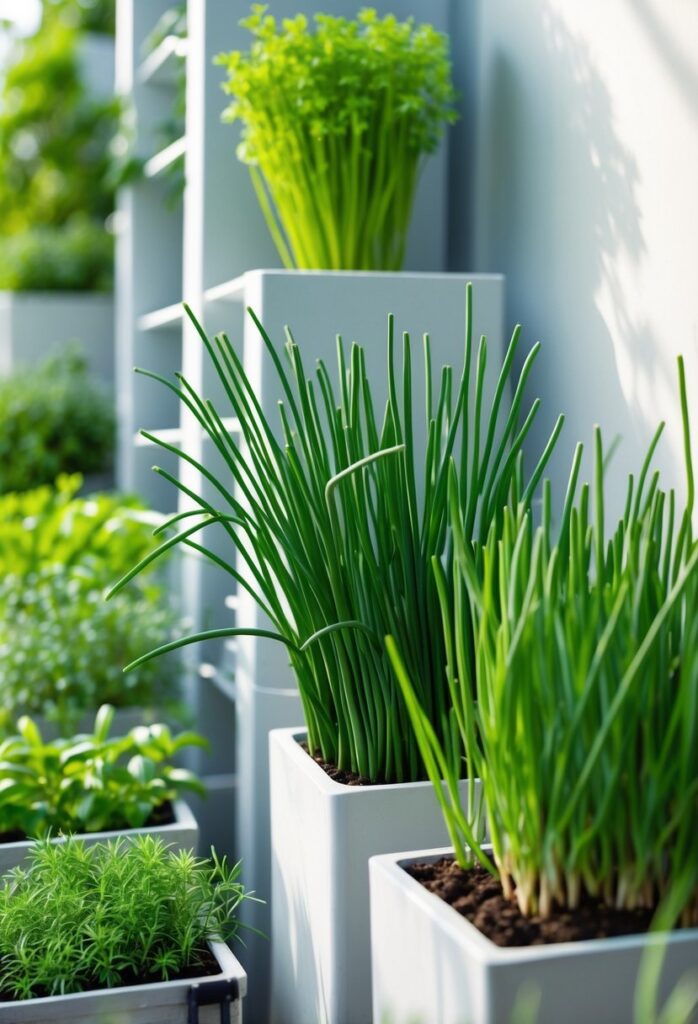
Chives grow well in small spaces, making them ideal for vertical herb gardens. They have thin, green stalks that add a mild onion flavor to dishes.
They can thrive in containers or recycled bottles attached to walls. Chives need about 6 to 12 inches between rows for healthy growth.
Besides flavor, chives produce attractive flowers that attract pollinators. Growing chives vertically saves space and ensures fresh herbs are always within reach. Learn more about creating a space-saving chive garden on any wall.
5) Oregano: Hardy herb that grows well vertically and enhances Mediterranean recipes
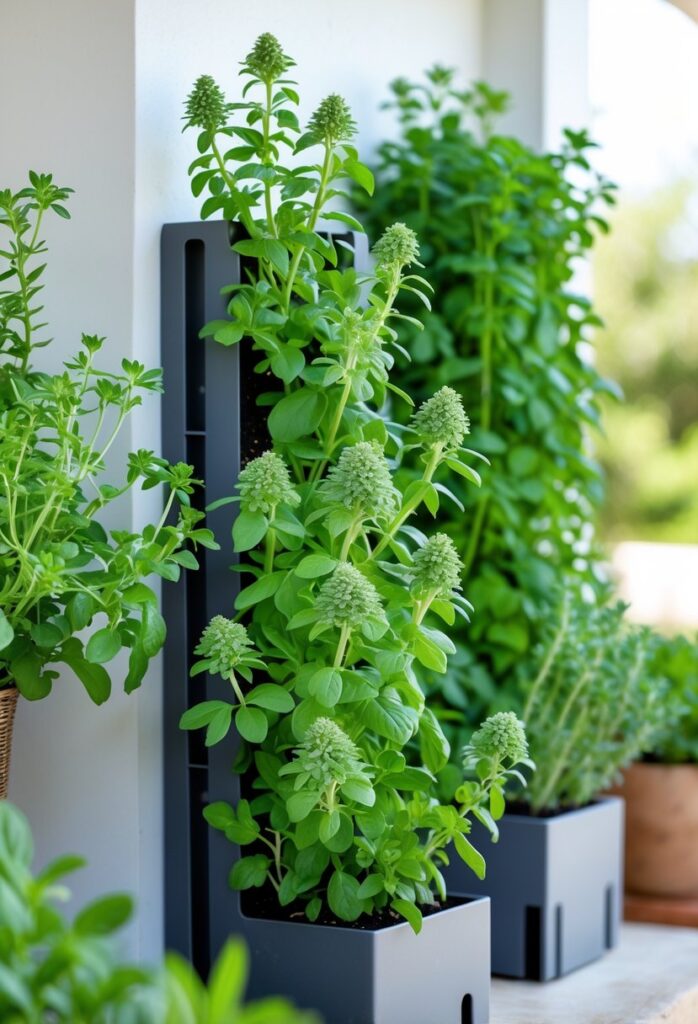
Oregano is a tough herb that thrives in vertical gardens. It prefers full sun and well-drained soil, making it ideal for raised or hanging planters.
It grows well even in lean soil, which helps keep its flavor strong. Oregano’s spreading habit allows it to climb or cascade in vertical spaces.
This herb adds a bold, earthy taste to Mediterranean dishes like pasta and grilled meats. Growing oregano vertically saves space and keeps the plant healthy by improving air circulation.
More tips on growing oregano can be found in this complete guide.
6) Parsley: Fits well in vertical planters and offers nutritional benefits
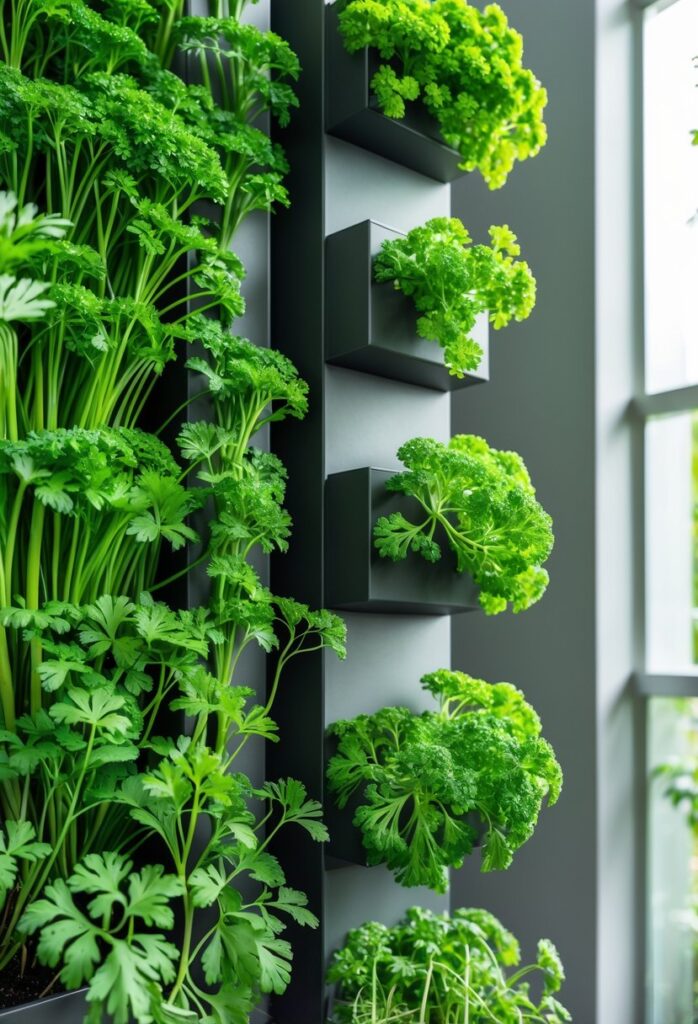
Parsley grows well in vertical planters because it has a moderate root system that fits easily into small spaces. Its compact leaves make it an ideal choice for towers or wall-mounted gardens.
This herb is rich in vitamins A, C, and K, which support immune health and bone strength. Growing parsley vertically also helps save garden space while providing fresh, nutritious greens within reach.
Parsley adds flavor to many dishes and remains fresh longer when grown in containers, making it practical for home kitchens. Learn more about growing parsley in containers for best results at How to Grow Parsley in Pots.
7) Cilantro: Suitable for vertical gardens with regular watering

Cilantro grows well in vertical gardens when it gets enough water. It prefers soil that stays moist but not soggy. Regular watering helps prevent the leaves from wilting.
This herb needs some sunlight, about 4 to 5 hours a day. It thrives in cooler temperatures and can bolt quickly if it gets too hot.
Vertical gardening allows easy access to fresh cilantro. It can be harvested regularly by cutting the outer leaves without harming the plant. For more tips on growing cilantro in small spaces, see this guide to cilantro success in the city.
Benefits of a 7 Vertical Herbs Garden
A garden with seven different herbs arranged vertically offers practical ways to use space efficiently while making care easier. It also creates better conditions for herbs to thrive by improving airflow and sunlight exposure.
Space-Saving Advantages
A vertical herb garden is ideal for small spaces. It uses walls or narrow areas, freeing up floor space for other purposes. This is especially useful in apartments or small backyards where horizontal space is limited.
Growing seven herbs vertically allows gardeners to fit more plants in a smaller footprint. This method can support different plant sizes and types in a compact area without overcrowding.
Using vertical structures like shelves, pockets, or hanging containers helps contain the garden neatly. It also keeps herbs organized and prevents sprawl, which makes maintenance simpler.
Enhanced Accessibility
Vertical gardens bring herbs closer and at eye level, making them easier to reach. This improves the experience of watering, pruning, or harvesting without needing to bend or stretch.
For a collection of seven herbs, accessibility is key because it encourages regular use and care. Gardeners can quickly identify the herbs and tend to their needs without moving around too much.
It also makes it easier to inspect plants for pests or disease. When all herbs are organized vertically, care routines become more efficient and enjoyable.
Improved Growth Conditions
Vertical herb gardens benefit from better air circulation around each plant. This reduces the risk of mold and fungal diseases that often occur in crowded, flat gardens.
Arranging herbs vertically exposes them to more sunlight evenly. Taller herbs can be placed at the top, while smaller ones stay at the bottom, optimizing light for all plants.
Water drains more efficiently in vertical systems, helping prevent root rot. This setup supports healthier roots and stronger growth by avoiding excess moisture buildup.
Plants tend to grow more robustly when they have ideal airflow, light, and watering conditions, which a well-planned seven herb vertical garden provides.
For more details on growing a vertical herb garden, see this step-by-step beginner friendly guide.
Design Considerations for Vertical Herb Gardens
Planning a vertical herb garden requires careful thought about where to place it and what kind of structure will best support the plants. These choices affect light exposure, plant health, and ease of maintenance. Attention to details like sunlight, weight, and space maximizes the garden’s success.
Choosing the Right Location
The location must provide enough sunlight for herbs, ideally 6 to 8 hours daily. South- or west-facing walls are often best because they get plenty of light. If indoors, placing the garden near a sunny window helps herbs thrive.
Space around the garden matters. There should be room for watering, pruning, and harvesting without damaging the plants. Avoid spots exposed to harsh wind or heavy rain outdoors to protect delicate herbs.
Temperature is another factor. Herbs prefer moderate conditions, so avoid placing vertical gardens where temperatures fluctuate widely or where heating and cooling vents blow directly on plants.
Selecting Suitable Structures
The structure must support the weight of soil, plants, and water. Strong materials like wood, metal, or durable plastic work well. The design should allow good drainage to prevent water buildup, which can damage roots.
Modular panels, pocket planters, or stacked pots are common formats. They should be easy to maintain and allow access to all herbs without uprooting others. Vertical frames that attach securely to walls or fences offer stability and save floor space.
Consider the garden’s size and the number of herbs planned. Lightweight, scalable structures help customize the garden to fit small or large spaces, indoors or outdoors. Designs that promote air circulation reduce the risk of mold or pests.
For more ideas on building these structures, check out comprehensive vertical herb garden guides like this one from plantingguys.com.
